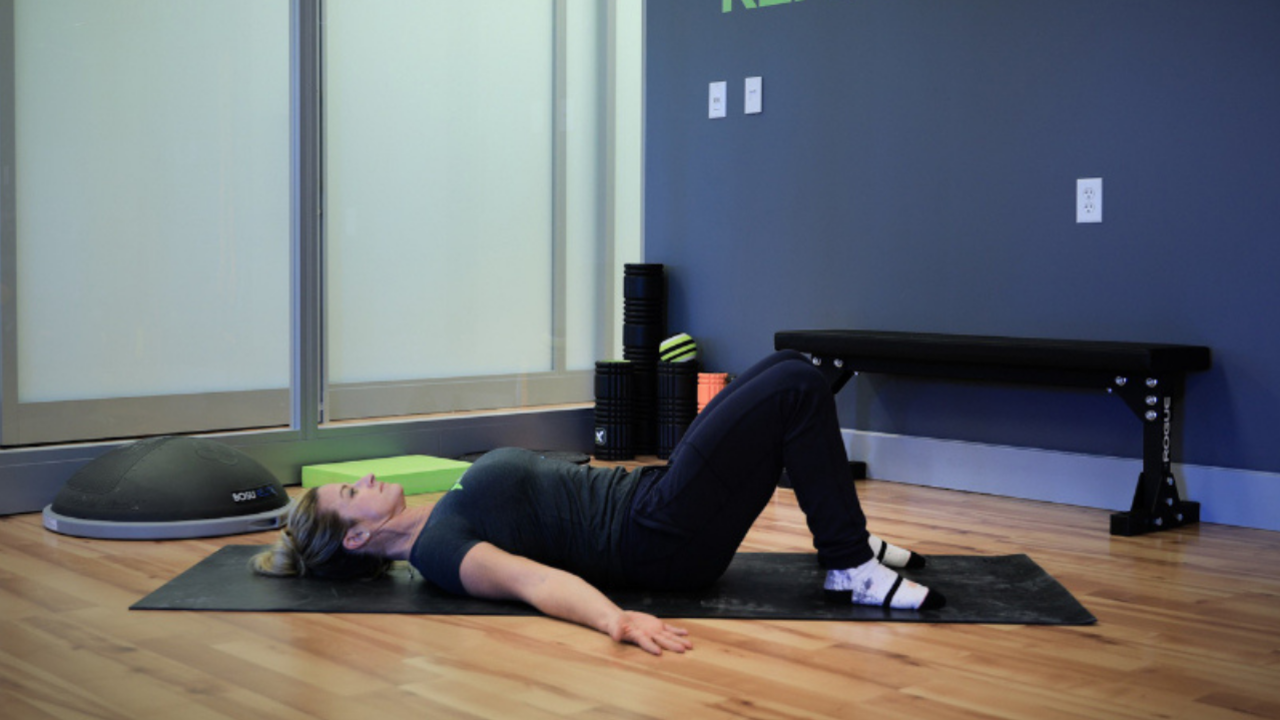
How Traction Benefits Your Nervous System
The traction exercise helps balance the Autonomic Nervous System (ANS), which helps regulate our stress response. The ANS is made of two parts; the Parasympathetic and Sympathetic Systems.
The Parasympathetic Nervous System is our rest and digestive function. It's dorsal root ganglia (aka control mechanisms) are located at the base of the occiput and in the sacrum. When tucking our chin and having the knees bent, we stimulate these restorative functions and decrease stress response.
The Sympathetic Nervous System's dorsal root ganglia is located in the mid thoracic spine, and, when over stimulated, will increase our stress response. Many, due to poor posture, are stuck in a sympathetic state. By lying flat on the back with the thoracic spine supported, the sympathetic nervous system will relax.
How to do Traction:
Step 1: Lie flat on your back on the floor or firm surface. Bend your knees and place your feet flat on the floor - hips width apart.
Step 2: Do a single pelvic tilt, lift your hips into the air then roll down so the low back is flat.
Step 3: Tuck your chin, making you neck long and flat.
Step 4: Place the arms out to your sides, palms facing up at a 45 degree angle. Relax any tension. The only active part of this exercise is your breathing.
Step 5: For 3 minutes, take full belly breaths. Push the abdomen out with the inhale and completely relax with the exhale.
The traction exercise is a simple exercise with immense benefits. It only takes 3 minutes to complete and does not require special equipment! Take the 30 Day Traction Challenge with Structural Elements®!
Read a similar blog post:
The Methodology that Helps Your Patients Reach Their Full Potential
Stay connected with news and updates!
Join our mailing list to receive the latest news and updates from our team.
We hate SPAM. We will never sell your information, for any reason.


